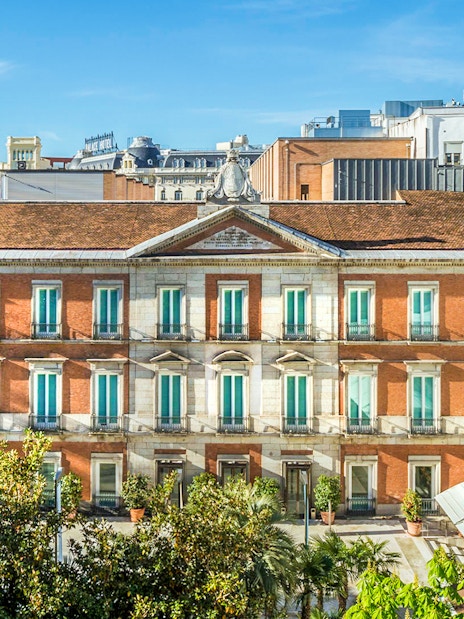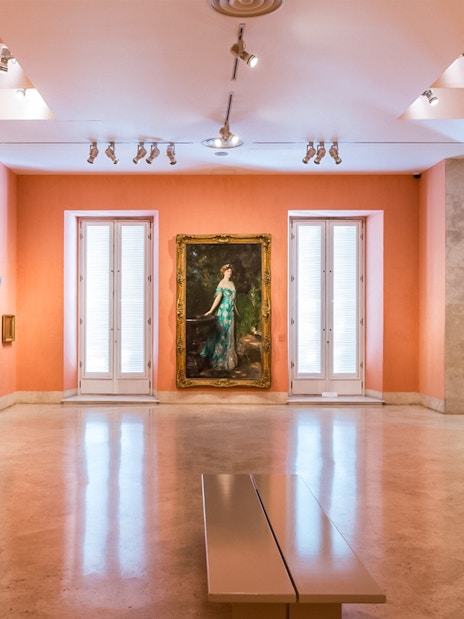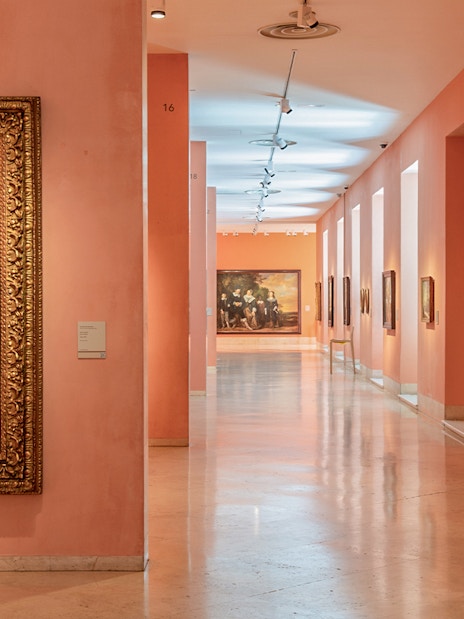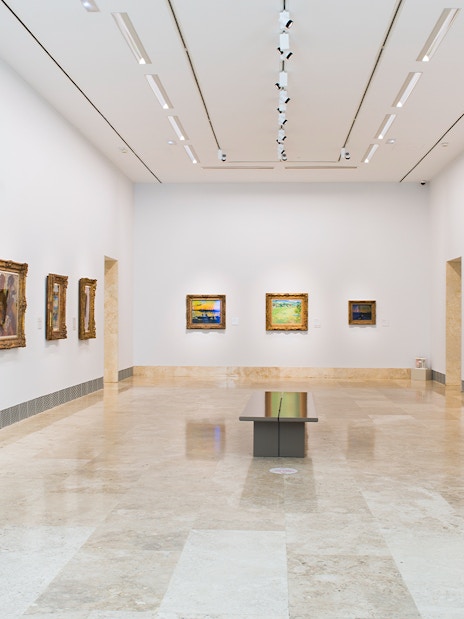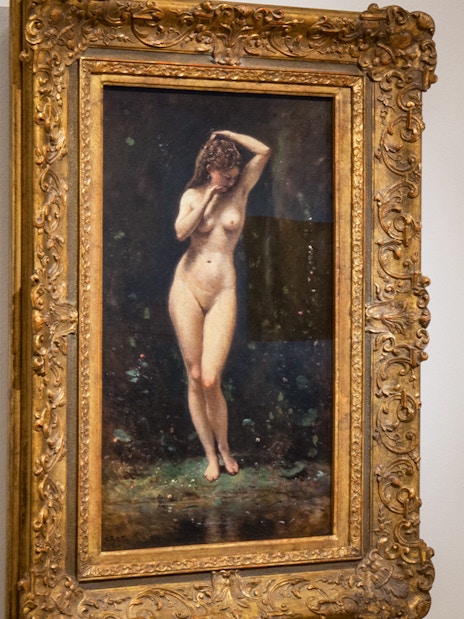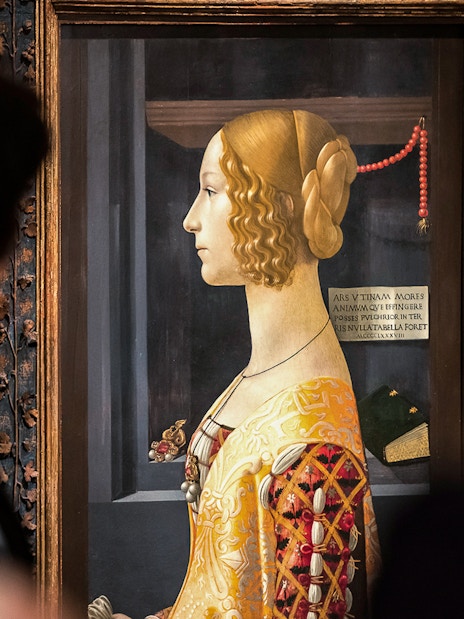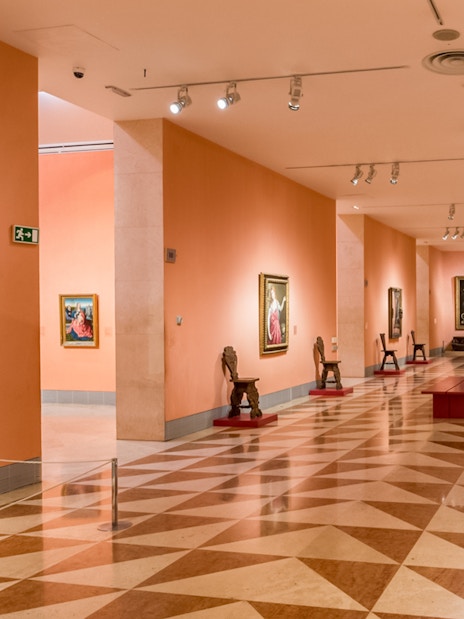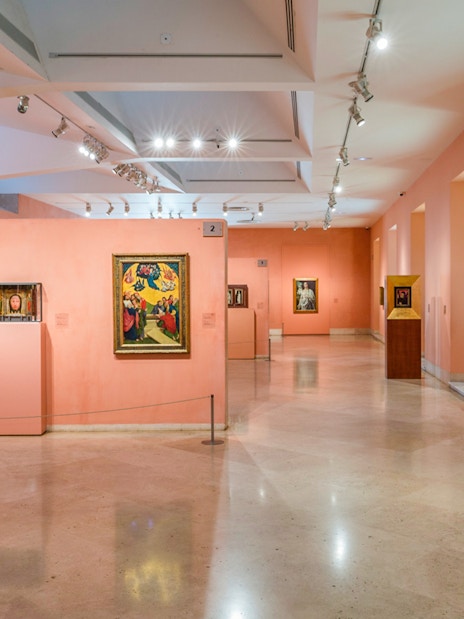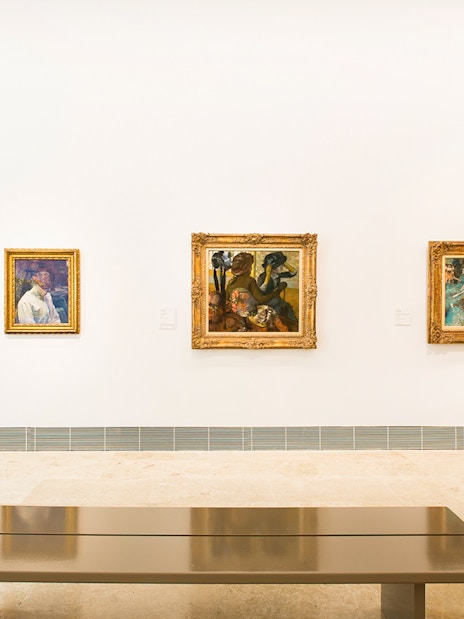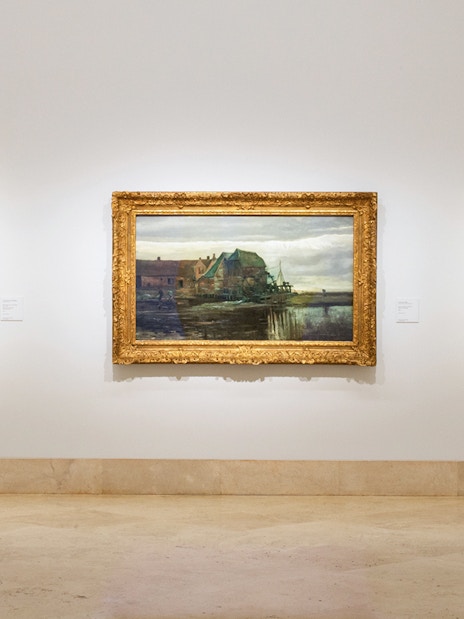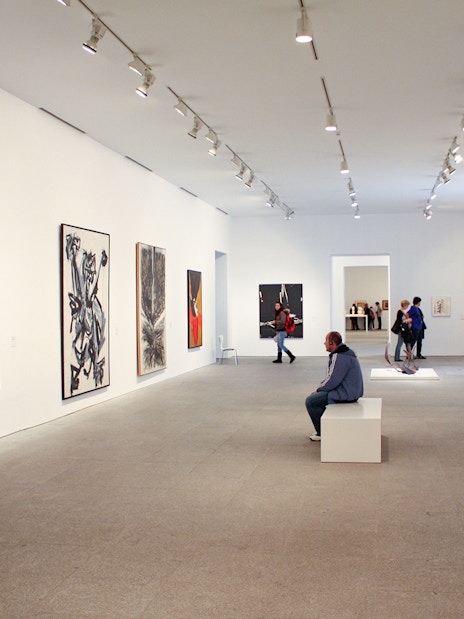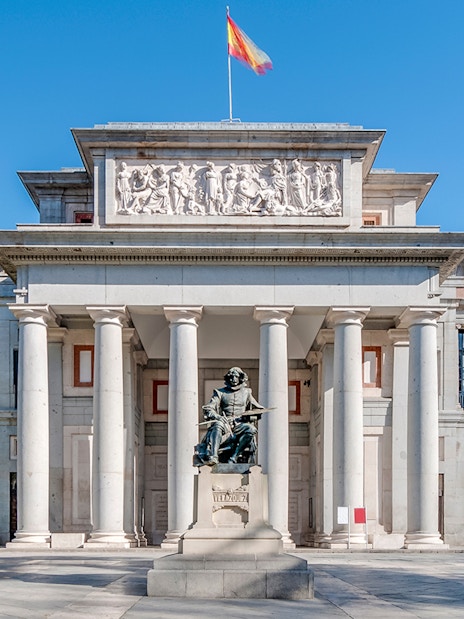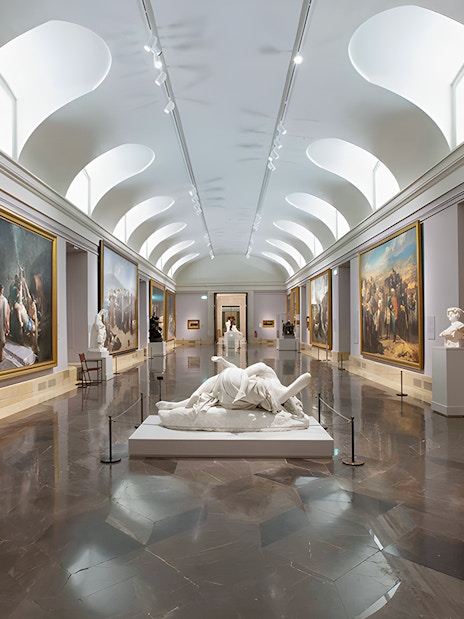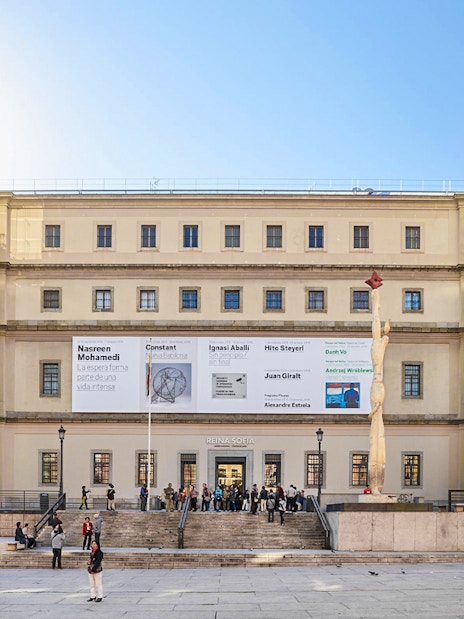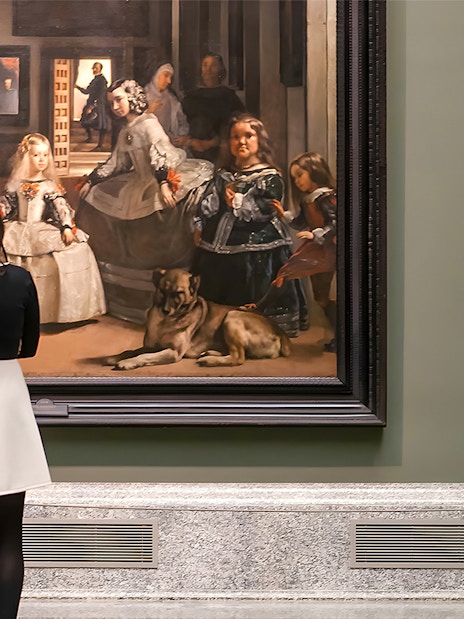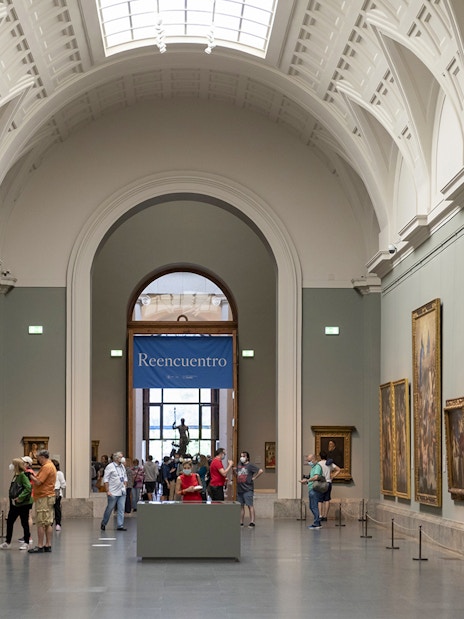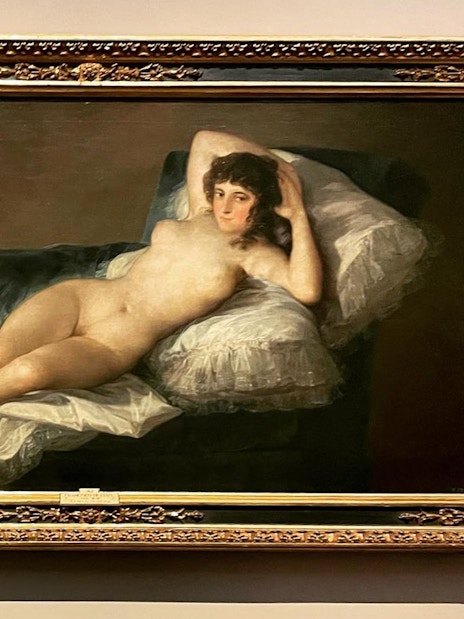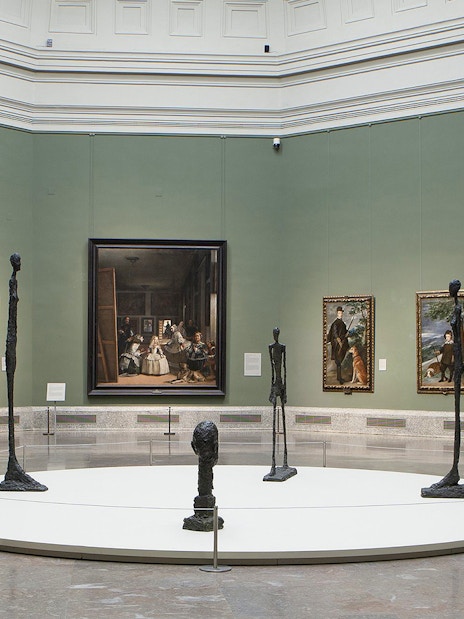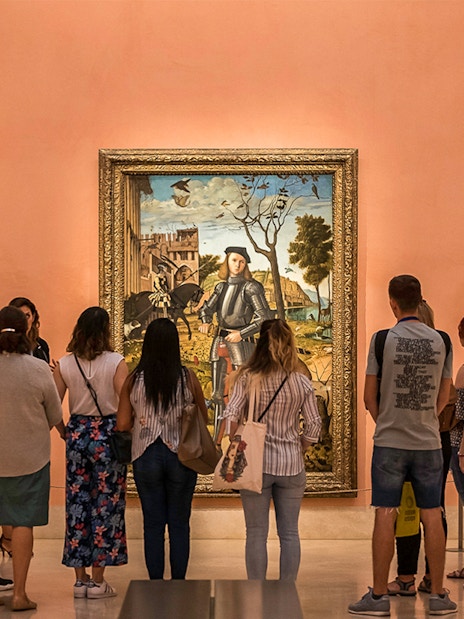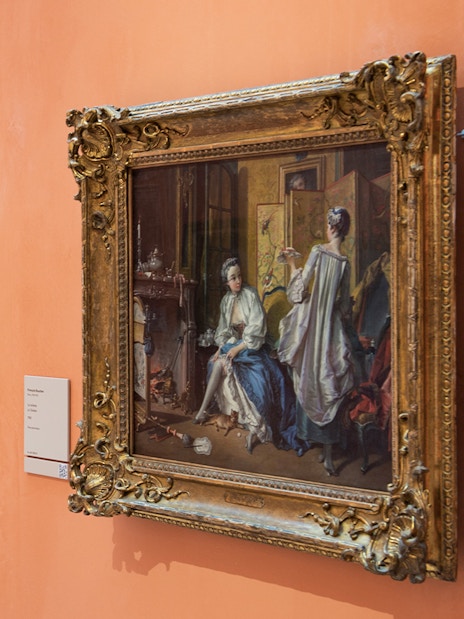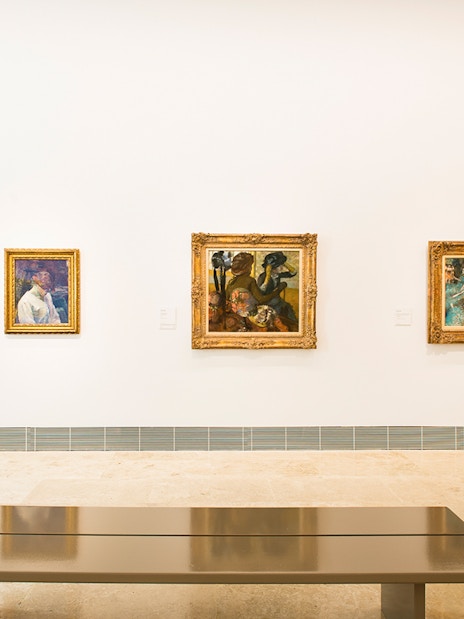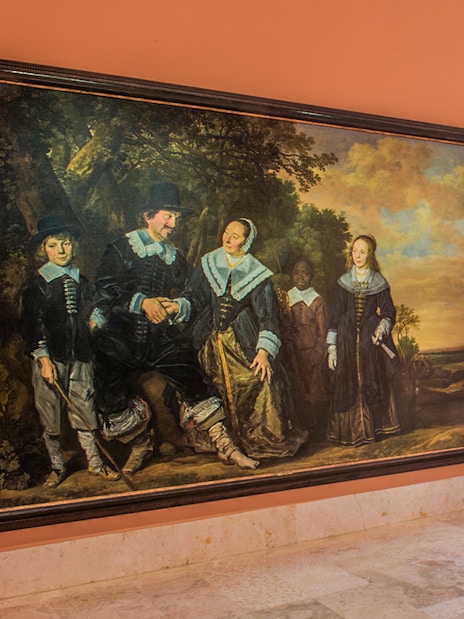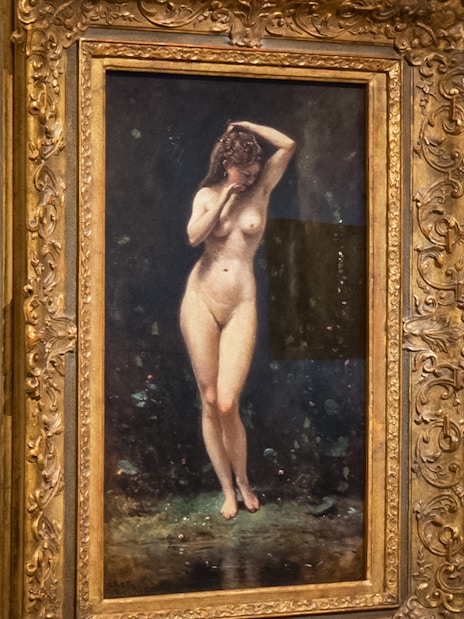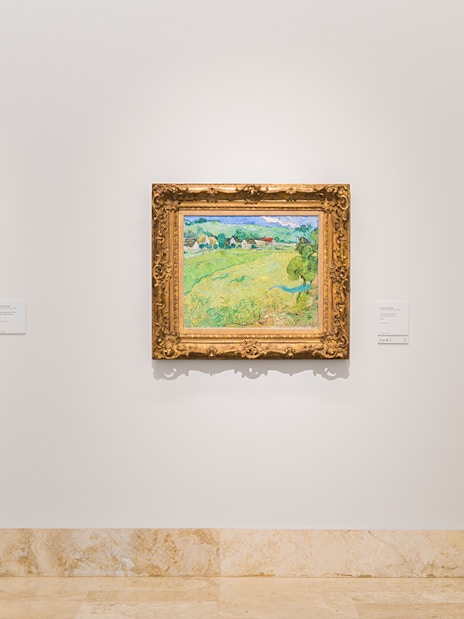- Royal Palace Of Madrid Tickets
- Prado Museum Tickets
- Madrid Flamenco Show Tickets
- Parque Warner Madrid
- Legends Football
- Santiago Bernabeu Tours
- Reina Sofia Museum
- Parque De Atracciones Madrid
- Madrid Zoo Aquarium
- Liria Palace
- Wax Museum Madrid
- Cívitas Metropolitano Stadium Tours
- Museum of Illusions Madrid
- Madrid to El Escorial tours
- Royal Palace Of Aranjuez
- Royal Palace of La Granja of San Ildefonso
- Atlantis Aquarium Madrid
- Madrid to Segovia Tours
Book Thyssen-Bornemisza National Museum Tickets
We are a trusted partner offering a curated selection of best tickets and tours. This is not the official website

Customize your visit by choosing full access or adding audio guides for insights into the art world.
- Grab full-access tickets to Thyssen-Bornemisza National Museum, where a treasure trove of iconic artworks from the 13th to 20th century awaits you.
- Opt to dive deeper with multilingual audio guides. The kid-friendly commentary makes art fun, engaging, and totally awesome for young minds!
- Browse the museum's permanent collection to marvel at Picasso's abstract art, Van Eyck’s details, Monet’s dreamy landscapes, and Rothko’s stirring use of color.
- Explore fresh perspectives and emerging artists with temporary exhibits.
Customize your visit by choosing full access or adding audio guides for insights into the art world.
- Grab full-access tickets to Thyssen-Bornemisza National Museum, where a treasure trove of iconic artworks from the 13th to 20th century awaits you.
- Opt to dive deeper with multilingual audio guides. The kid-friendly commentary makes art fun, engaging, and totally awesome for young minds!
- Browse the museum's permanent collection to marvel at Picasso's abstract art, Van Eyck’s details, Monet’s dreamy landscapes, and Rothko’s stirring use of color.
- Explore fresh perspectives and emerging artists with temporary exhibits.
Inclusions
- Entry to the Thyssen-Bornemisza National Museum
- Access to the Permanent Collection
- Access to the Carmen Thyssen Collection
- Access to all ongoing temporary exhibits
- Audio guide in Spanish, English, French, German, Italian, Portuguese, Russian, Japanese, Chinese, and Korean (as per option selected)
Exclusions
- Live guide
- Tip: Don't miss the Carmen Thyssen collection. It's a favorite among art lovers and offers insight into a vast range of artistic movements and cultural contexts.
- On Mondays, entry to the museum is free. All you have to do is collect your free tickets from the venue.
- Visitors have to clear out the gallery 5 minutes before closing time.
- Assistance dogs and emotional support animals are allowed, with a valid medical certificate.
- This experience is accessible by wheelchair.
- Prams, wheelchairs, and electric scooters are available for use, free of charge.
- Facilities: Baby feeding room, Wi-Fi, ATM, cloakroom, mobile charging stations, and cafe.
- Download the free Second Canvas Thyssen app for unique insights.
- These tickets can't be cancelled or rescheduled.
Unlock Madrid’s Golden Triangle of Art with access to top 3 national museums.
- Here's your passport to Spain's finest art! Explore 3 iconic museums, just a short walk from each other, anytime within a year after purchase.
- At Prado Museum, marvel at the largest collection of Spanish art displaying icons like The Feast of Bacchus and Las Meninas by Velázquez.
- Explore art movements through stunning paintings at Thyssen-Bornemisza National Museum, from Titian’s Renaissance precision to Dali’s bizarre dreamscapes.
- Step into the surreal world of 20th-century Spanish art at the Reina Sofía Museum, home to Picasso’s Guernica and Miró's sculpture Femme.
Unlock Madrid’s Golden Triangle of Art with access to top 3 national museums.
- Here's your passport to Spain's finest art! Explore 3 iconic museums, just a short walk from each other, anytime within a year after purchase.
- At Prado Museum, marvel at the largest collection of Spanish art displaying icons like The Feast of Bacchus and Las Meninas by Velázquez.
- Explore art movements through stunning paintings at Thyssen-Bornemisza National Museum, from Titian’s Renaissance precision to Dali’s bizarre dreamscapes.
- Step into the surreal world of 20th-century Spanish art at the Reina Sofía Museum, home to Picasso’s Guernica and Miró's sculpture Femme.
Inclusions
- Entry to Prado Museum
- Entry to Thyssen-Bornemisza National Museum
- Entry to Reina Sofia Museum
Exclusions
- Access to temporary exhibitions at Thyssen-Bornemisza National Museum
- The Art Walk pass is valid for a year from booking. You can enter each museum only once with this pass.
- The venues are wheelchair and pram/stroller accessible.
Prado Museum
- Tip: Prado Museum holds an interesting set of items known as the Dauphin’s Treasure – luxury vessels owned by King Louis. Ask your guide for more information.
- Some sections of the museum are sometimes subject to last-minute closures at the authorities' discretion.
- Admission is free Mon to Sat from 6pm to 8pm, and Sun and holidays from 5pm to 7pm.
Reina Sofia Museum
- Tip: Be sure to stop by Reina Sofia’s free-access art library, hosting a collection of over 100,000 books, over 3,500 audio recordings, and 1,000 videos!
- Visitors under the age of 14 must be accompanied by an adult. Anyone between the age of 14 and 18 who wishes to visit the museum without an adult must show their national ID document.
- Admission is free on Mon, Wed, Thu, Fri & Sat between 7pm & 9pm, and on Sun from 12:30pm to 2:15pm.
Thyssen-Bornemisza National Museum
- This ticket does not include temporary exhibitions of the National Thyssen Museum.
- Assistance dogs and emotional support animals are allowed, with a valid medical certificate.
- Prams, wheelchairs, and electric scooters are available for use, free of charge.
- Facilities: Baby feeding room, WiFi, ATM, cloakroom, mobile charging stations, and cafe.
- Download the free Second Canvas Thyssen app for unique insights.
- On Mondays, entry to the museum is free. All you have to do is collect your free tickets from the venue.
- Visitors have to clear out the gallery 5 minutes before closing time.
Tip: A nearly photorealistic painting was created by William Bradford in the 19th century and is now part of the Carmen Thyssen Collection, Room 31. It's called Fishermen off the Coast of Labrador.
- These tickets can’t be cancelled. However, you can use them any time within the next 12 months.
- These tickets are valid for 12 months from the date of purchase.
Experience the magic of art without the wait—deep dive with an art expert.
- Skip the lines, maximize your time, and join an intimate journey through art history with a passionate guide and a tight group of fellow art lovers.
- Follow your guide to unravel the inspirations and motivations behind iconic masterpieces in English or Spanish, you choose!
- Van Gogh, Monet, Mondrian, Picasso, or Dali—chase stories behind your favorite artist with a small group tour, almost tailored for you.
- Trace the evolution of art from medieval religious depictions to modern abstracts, with full access to an extraordinary collection of 1000+ works.
Experience the magic of art without the wait—deep dive with an art expert.
- Skip the lines, maximize your time, and join an intimate journey through art history with a passionate guide and a tight group of fellow art lovers.
- Follow your guide to unravel the inspirations and motivations behind iconic masterpieces in English or Spanish, you choose!
- Van Gogh, Monet, Mondrian, Picasso, or Dali—chase stories behind your favorite artist with a small group tour, almost tailored for you.
- Trace the evolution of art from medieval religious depictions to modern abstracts, with full access to an extraordinary collection of 1000+ works.
Inclusions
- Guided tour of the Thyssen-Bornemisza National Museum with skip-the-line entry
- Expert English or Spanish-speaking guide (as per option selected)
- Small group (up to 7)
- Access to the Permanent Collection
- Access to the Carmen Thyssen Collection
- Access to temporary exhibits
- Assistance dogs and emotional support animals are allowed, with a valid medical certificate.
- This experience is accessible by wheelchair.
- Prams, wheelchairs, and electric scooters are available for use, free of charge.
- Facilities: Baby feeding room, Wi-Fi, ATM, cloakroom, mobile charging stations, and cafe.
- Download the free Second Canvas Thyssen app for unique insights.
- On Mondays, entry to the museum is free. All you have to do is collect your free tickets from the venue.
- Visitors have to clear out the gallery 5 minutes before closing time.
- You can cancel these tickets up to 24 hours before the experience begins and get a full refund.
Combo (Save 7%): Madrid Hop-On Hop-Off Bus Tour + Art Walk
7% off
Discover Madrid's rich history and world-class art, all within your budget.
- See the best of Madrid on a budget! Enjoy a hop-on hop-off tour plus entry to Prado, Reina Sofia, and Thyssen-Bornemisza National Museum with this combo.
- Hop on and off 35 spots unlimited times for 1 or 2 days. Plug into the onboard audio guide to spice your sightseeing with locally kept secrets.
- At Thyssen-Bornemisza National Museum, explore artworks from masters like Van Gogh, Monet, Picasso, Mondrian and more all from the family's private collection.
- At the Prado, browse a royal collection spanning 200 years, including the world’s largest display of Goya’s intense Black Paintings.
- At Reina Sofia, dive into surrealist masterpieces by Dalí and see iconic artworks like Guernica by Picasso among others.
Discover Madrid's rich history and world-class art, all within your budget.
- See the best of Madrid on a budget! Enjoy a hop-on hop-off tour plus entry to Prado, Reina Sofia, and Thyssen-Bornemisza National Museum with this combo.
- Hop on and off 35 spots unlimited times for 1 or 2 days. Plug into the onboard audio guide to spice your sightseeing with locally kept secrets.
- At Thyssen-Bornemisza National Museum, explore artworks from masters like Van Gogh, Monet, Picasso, Mondrian and more all from the family's private collection.
- At the Prado, browse a royal collection spanning 200 years, including the world’s largest display of Goya’s intense Black Paintings.
- At Reina Sofia, dive into surrealist masterpieces by Dalí and see iconic artworks like Guernica by Picasso among others.
Inclusions
Madrid Hop-On Hop-Off Bus Tour
- 1 or 2-day unlimited hop-on hop-off pass
- Audio guide in Spanish, Catalan, Gallego, Euskera, English, French, German, Italian, Portuguese, Dutch, Russian, Chinese, Arabic & Japanese
- Free Wi-Fi
- Discount booklets for shops and restaurants
- Tour map
Art Walk
- Entry to Prado Museum
- Entry to Thyssen-Bornemisza National Museum.
- Entry to Reina Sofia Museum
Exclusions
Madrid Hop-On Hop-Off Bus Tour
- Entry to attractions
Art Walk
- Access to the temporary exhibitions at Thyssen-Bornemisza National Museum.
Blue Route: Historical Madrid
- First bus: 10am from Museo del Prado
- Last bus: 6pm
- Popular stops: Royal Palace, Almudena Cathedral, Prado Museum
- Click here for the Blue Route stops and boarding points.
Green Route: Modern Madrid
- First bus: 10am from Plaza de Neptuno
- Last bus: 6pm
- Popular stops: Santiago Bernabeu Stadium, Plaza de Castilla, Plaza de Cibeles
- Click here for the Green Route stops and boarding points.
Madrid Hop-On Hop-Off Bus Tour
- Tip: Hop off at Puerta del Sol, the bustling heart of Madrid, known for its iconic clock and statue of the 'Bear and the Strawberry Tree'.
- Facilities: wheelchair accessibility, free Wi-Fi, complimentary audio headsets.
- On days when the tours are canceled due to traffic interruptions, passengers will be informed through notices at bus stops.
- Family tickets are available only for the 1-day bus tour ticket.
Art Walk
- The Art Walk pass is valid for a year from booking. You can enter each museum only once with this pass.
- Visitors under the age of 14 must be accompanied by an adult. Anyone between the age of 14 and 18 who wishes to visit the museum without an adult must show their national ID document.
- The venues are wheelchair and pram/stroller accessible.
- Prado Museum: Admission is free Mon to Sat from 6pm to 8pm, and Sun and holidays from 5pm to 7pm.
- Reina Sofia Museum: Admission is free on Mon, Wed, Thu, Fri & Sat between 7pm & 9pm, and on Sun from 12:30pm to 2:15pm.
- Thyssen-Bornemisza National Museum: Admission is free on Mondays.
- These tickets can't be cancelled or rescheduled.
Top things to do in Madrid
Why visit Thyssen-Bornemisza Museum?
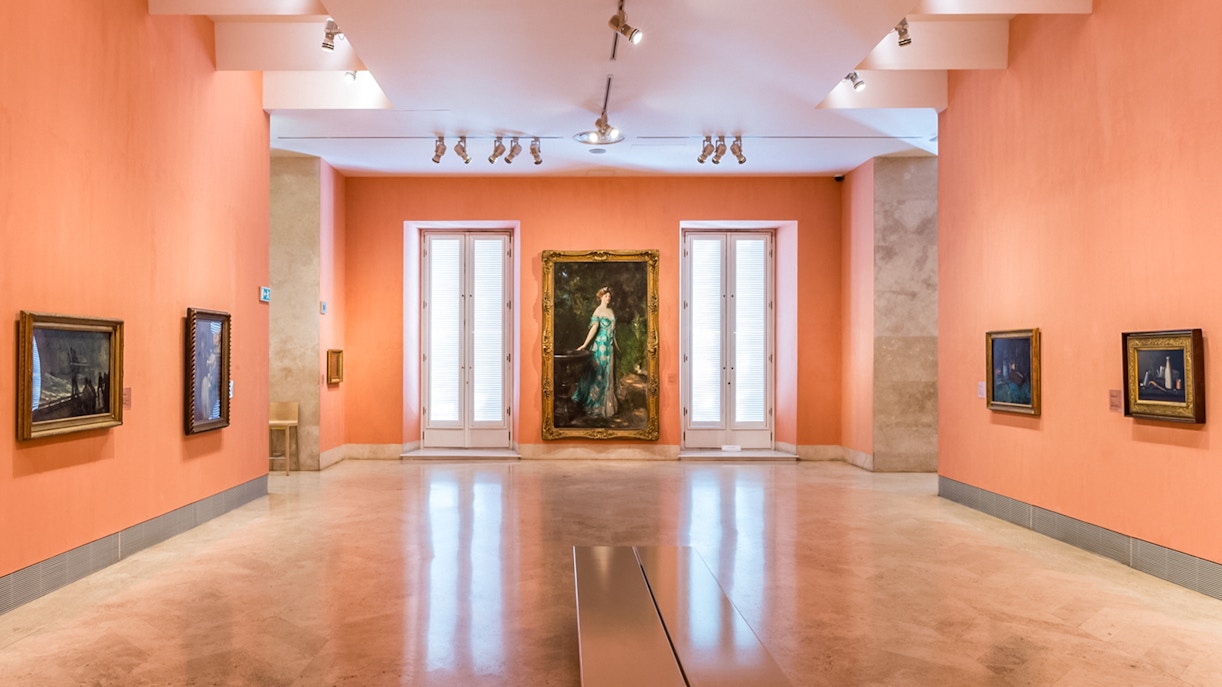
- Diverse Art Movements: The Thyssen-Bornemisza Museum encompasses art from around the world across diverse art movements spanning almost eight centuries. There is no better place to explore the evolution of European art.
- Rare Art Pieces: The Thyssen-Bornemisza Museum showcases many medieval art pieces, rare in Spanish art museums and other 20th-century creations of fauvism, surrealism, and abstraction.
- Largest Private Collection: Only second to the British Royal Collection, the Thyssen-Bornemisza Museum is one of the largest private art collections in the world.
- Active Engagement with the Public: The Thyssen-Bornemisza Museum often hosts exhibitions and guided tours for children and actively tries to foster an interest in art and history.
- Unique Location: The Thyssen-Bornemisza Museum’s unique location in the ‘Golden Triangle of Art’ makes it one of the most coveted visits for art lovers. It is right next to the Centro de Arte Reina Sofia and Museo Del Prado, hence you can plan an entire day of visiting art museums in Madrid.
Thyssen-Bornemisza Museum ticket explained
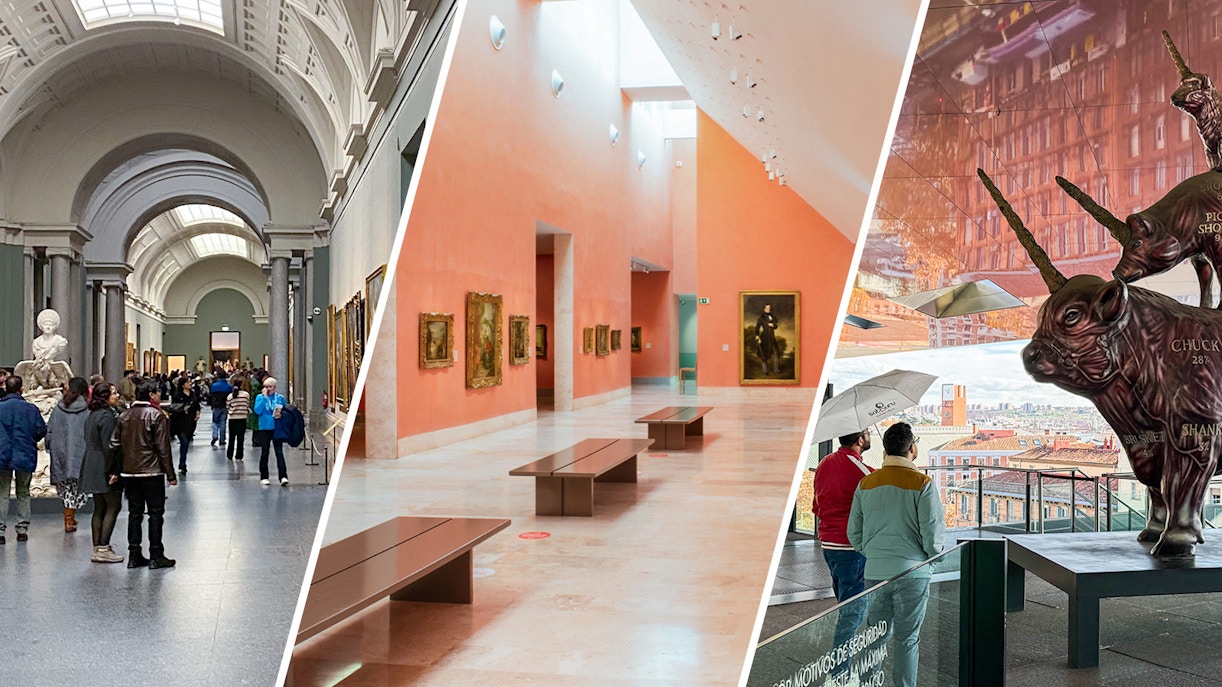
Paseo Del Arte- 3 Museum Pass
- Book the Paseo Del Arte- 3 Museum Pass to visit the Golden Triangle of Art- Thyssen-Bornemisza Museum, Centro de Arte Reina Sofia, and Museo Del Prado.
- The Paseo Del Arte- 3 Museum Pass allows you to enter any museum at any hour during the opening hours and stay as long as you like.
- You do not have to fret about getting each ticket separately and can redeem the tickets until 1 year of their purchase.
- Marvel at the largest collection of Spanish art at the Prado Museum.
- Witness the world-famous masterpieces of Pablo Picasso, Salvador Dali, and others in the Reina Sofia Museum.
- The Thyssen-Bornemisza Museum, holding the second-largest private art collection in the world is always a marvelous sight.
- Book the Paseo Del Arte- 3 Museum Pass to visit these three museums and get a comprehensive understanding of the evolution of European Art.
Cancellation policy
The Paseo Del Arte- 3 Museum Pass cannot be canceled or rescheduled. For more information, make sure to check your details before purchasing.
Thyssen-Bornemisza Museum highlights
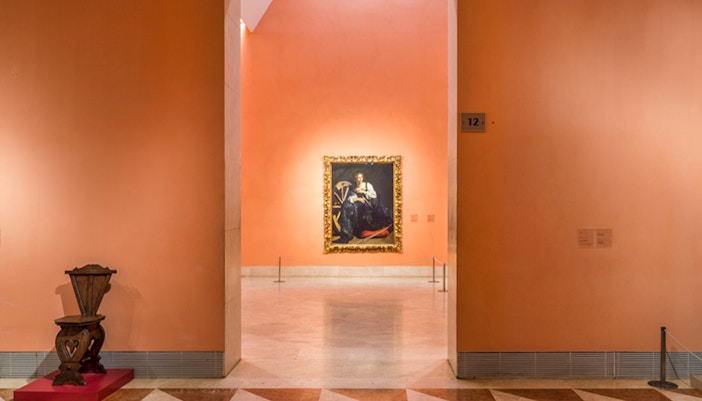
St. Catherine of Alexandria
Situated at the intersection of baroque and naturalist styles, Caravaggio’s portrait of St. Catherine of Alexandria shows a woman kneeling on a red cushion. The woman in the portrait is associated with Fillide Melandroni, one of Rome’s most coveted courtesans, who frequently modelled for Caravaggio in the 4th century.
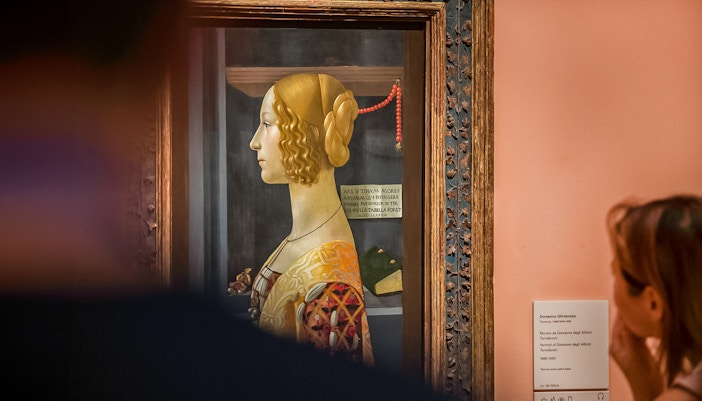
Giovanna degli Albizzi Tornabuoni
Domenico Ghirlandaio’s portrait of Giovanna degli Albizzi Tornabuoni is emblematic of classical antiquity, drawn in typical Quattrocento style. The idealized extremely delicate features of the model with a prayer book and rosary with coral beads in the background is indicative of her pious and noblewoman character.
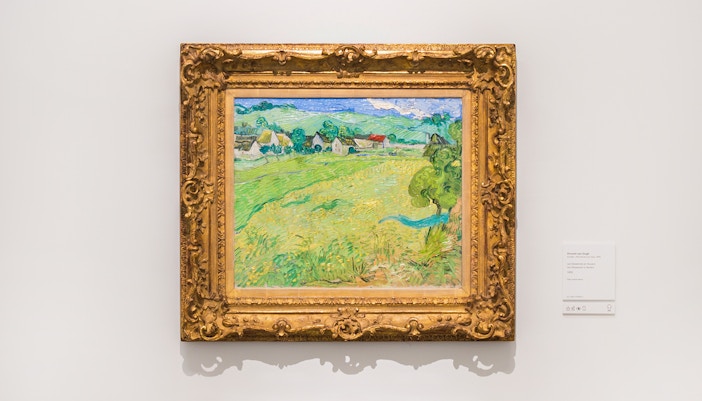
Les Vessenots
True to his Post-Impressionist roots, Vincent Van Gogh painted a few trees, simple cottages, and yellow and green wheat fields in his ‘Les Vessenots’ in Auvers in 1890. His nervous brushstrokes represent a sense of freedom and vitality intermingled with feelings of loneliness in the last few years of his life.
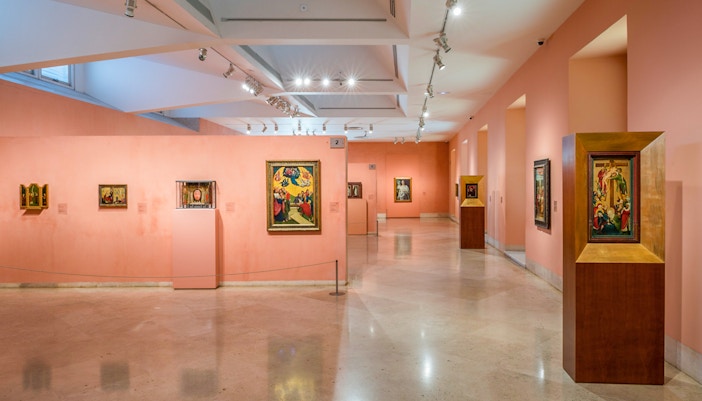
Jesus Among the Doctors
Albrecht Durer’s ‘Jesus Among the Doctors’ signaled the arrival of new ideas from northern Europe. The portrait shows Jesus’s first act of sharing theological sermons at the age of 12. Durer brings forward the ideals of harmony, beauty, and perfection found in Italian art and blends them with the German way of seeing the world.
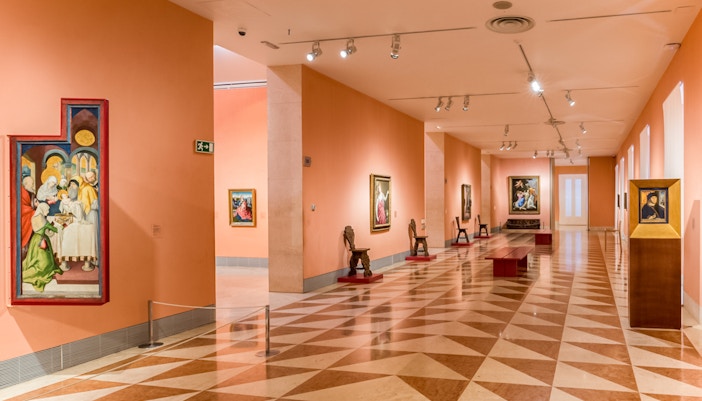
Waterloo Bridge
The most unique element in André Derain’s 1906 painting is the mosaic effect achieved through pointillist techniques. In true Fauvist style, Derain captured the banks of the Thames River in shades of blue, purple, grey, and green, only bringing out pops of yellow and orange to depict sunlight.
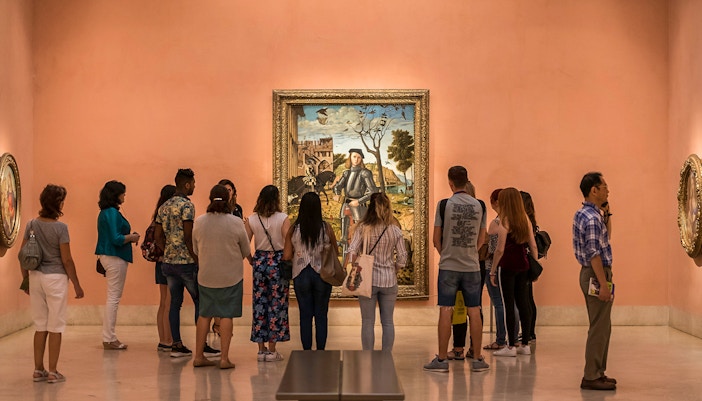
Young Knight in a Landscape
Vittore Carpaccio's ‘Young Knight in a Landscape’ depicts a full-length portrait of a young knight almost about to draw his sword. The vibrant colors and magical mood in the background are in contrast to Carpaccio's love for detail. The flora and fauna allude to the virtues a young knight must embody to rise through the ranks.
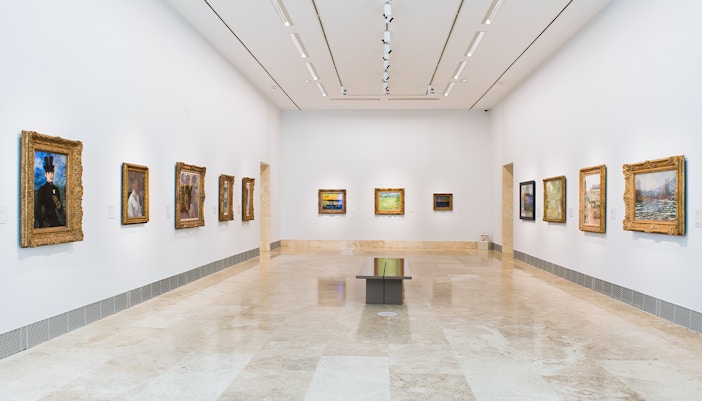
Rue Saint-Honoré in the Afternoon
Camilla Pissaro captured the edge of Théâtre Français (now known as Place André-Malraux) and rue Saint-Honoré in this 1897 oil painting. It depicts buildings, people, and street lamps after receiving a shower of rain. It marked Pissaro’s shift from pointillist techniques to Impressionist styles.
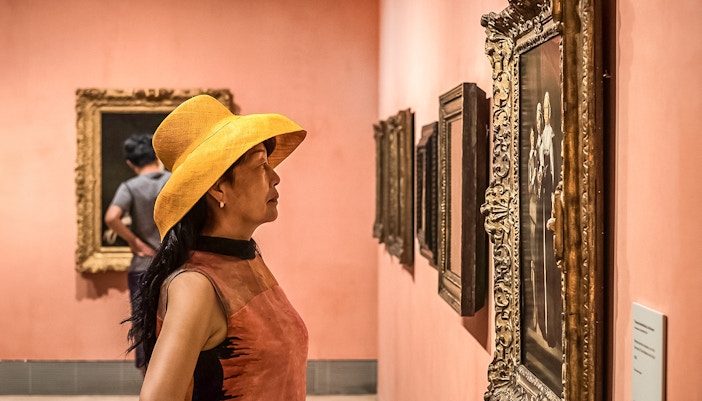
Harlequin with a Mirror
Pablo Picasso’s 1923 ‘Harlequin with a Mirror’ is assumed to be a self-portrait drawn in circus and commedia dell’arte style. The figure wears a harlequin’s two-cornered hat and an acrobat’s costume. The figure has distinct classical proportions that Picasso adapted in his paintings after 1917.
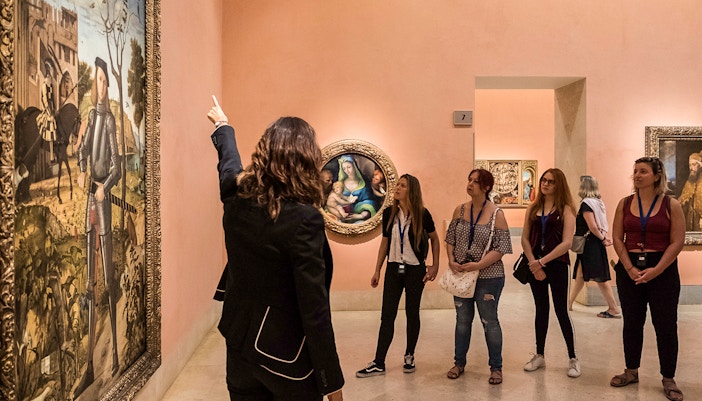
Mata Mua
‘Mata Mua’, literally meaning Olden Times, is Paul Gaugin’s effort to flee from everything artificial and conventional. The 1891 painting depicts the Tahiti moon goddess, Hina in flat colors. The painting is simple with followers surrounding the portrait of goddess Hina, engaged in her worship.
Plan your visit to the Thyssen-Bornemisza Museum
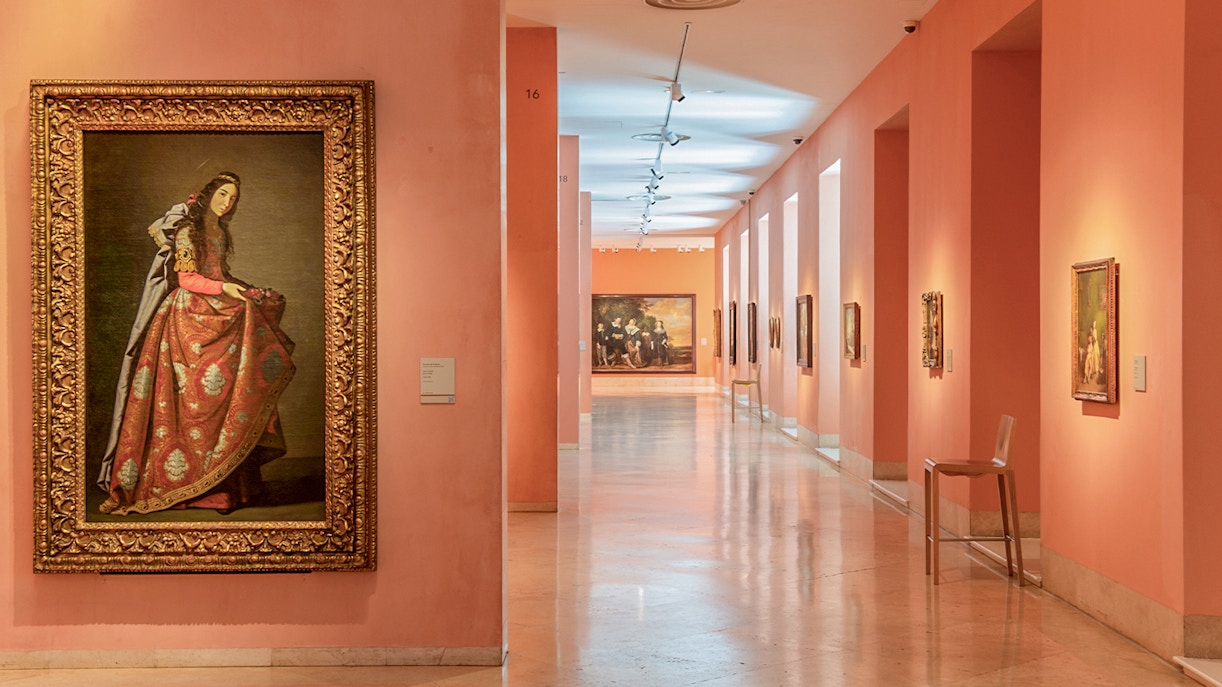
- Tuesday to Sunday: 10 AM to 7 PM
- Monday: 12 PM to 4 PM
- Note 24 and 31 December Timings: 10 AM to 3 PM
- Closed On: 1 January, 1 May, and 25 December
Duration of the Visit: It is recommended that you spend at least two to three hours in the Thyssen-Bornemisza Museum as there are plenty of art movements to cover.
Best Time to Visit: The pleasant weather from March to May and from September to November makes it the best time to visit the Thyssen-Bornemisza Museum. The crowds are far lesser than in the peak summer season.
Address: Paseo del Prado, 8, 28014 Madrid, Spain.
- By Bus: Lines 1, 2, 5, 9, 10, 14, 15, 20, 27, 34, 37, 41, 51, 52, 53, 74, 146, and 150.
Nearest Stop: Neptuno or Las Cortes - By Metro: Line 2
Nearest Stop: Banco de Espana - By Train: Barcelona Sants to Thyssen-Bornemisza direct trains.
Nearest Stop: Atocha or Recoletes - By Car/Bike: Madrid International Airport to Thyssen-Bornemisza Museum is 15.2 km.
Nearest Car Parking: Las Cortes
Nearest Bike Station: Marqués de Cubas, 25

- Accessibility: The museum makes wheelchairs and walking sticks available to every traveler who needs them in permanent exhibitions.
- Guided Tours: The Thyssen-Bornemisza Museum has guided tours, audio guides with audio descriptions, and sign language guides.
- Toilets: There are wheelchair-accessible toilets in the cafe, auditorium, and in museum.
- Baby Feeding Rooms: The lower ground floor of the Thyssen-Bornemisza Museum has baby feeding rooms.
- Photography: You can click pictures of every painting, except the ones showcased in special exhibitions, which are solely the property of the Thyssen-Bornemisza Museum.
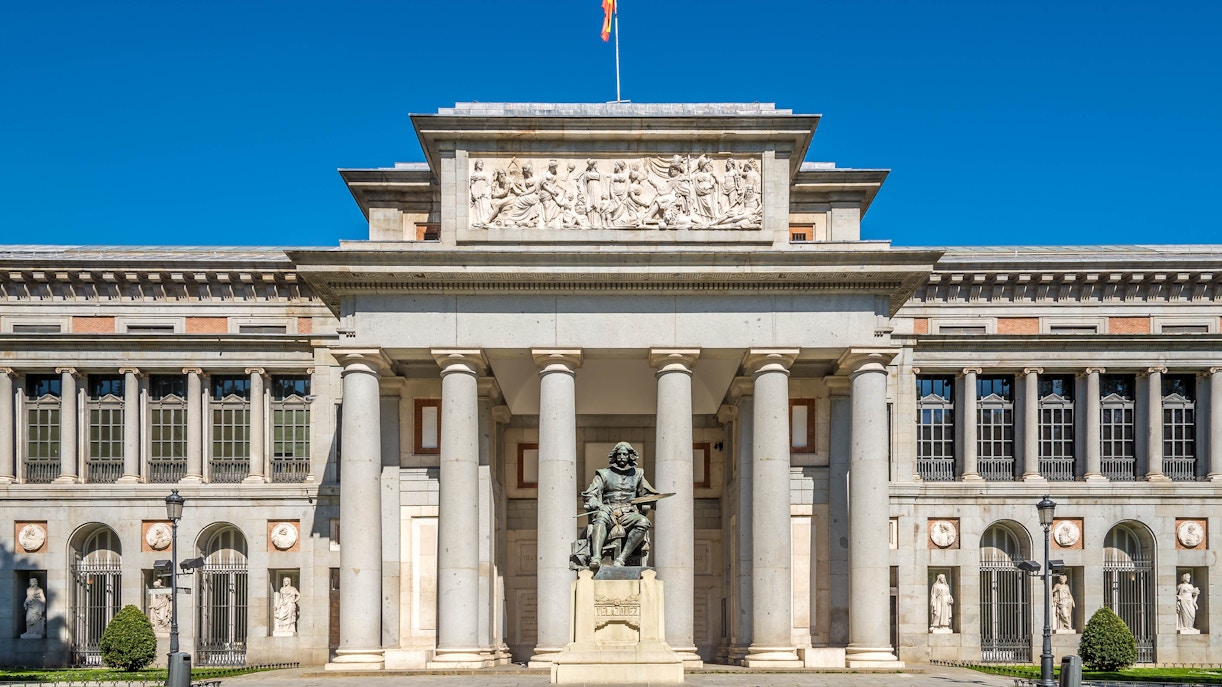
- Prado Museum: A part of the ‘Golden Triangle of Art’, the Museo Nacional del Prado houses several masterpieces like ‘The Holy Trinity’ and The Knight with His Hand on His Breast’. It also features collections from Juan de Juanes, Bartolome Bermejo, and El Greco.
- Reina Sofia Museum: A fantastic intersection of objects, spaces, and time, the Reina Sofia Museum is a beautiful ode to international art. Look out for ‘Guernica’, capturing the harrowing cries against war, the 1980s Movida Madrileña, Eduardo Chillida, and Saura’s Lola’s works.
- Santiago Bernabeu Stadium: If you love football, visiting the Santiago Bernabeu Stadium is an experience you cannot miss. Home to Real Madrid FC, one of the most popular clubs in the history of football, the stadium has witnessed spectacular goals.
- Royal Palace of Madrid: The baroque interiors and ornate architecture of the Royal Palace of Madrid have witnessed several important historical events. It still functions as the official residence of the imperial family and is used for several important state dinners.

- Choose Weekdays: It is best to visit the Thyssen-Bornemisza Museum on weekdays, as there is less crowd.
- Wear Comfortable Shoes: Wear your most comfortable shoes to avoid tiring yourself out, as the Thyssen-Bornemisza tour demands lots of walking.
- Book Tickets Online: Book the Thyssen-Bornemisza Museum tickets in advance to avoid long queues and spend more time observing the paintings.
- Use the Museum Wi-Fi: Use the Thyssen-Bornemisza Museum’s available Wi-fi to access learning materials.
- Do a Digital Detox: Try to stay off your phone to immerse yourself in the baroque, Renaissance, and Expressionist eras.
Frequently asked questions about Thyssen-Bornemisza Museum
The best way to buy Thyssen-Bornemisza museum tickets is to get them online.
Yes, you can buy Thyssen-Bornemisza museum tickets online.
Book Thyssen-Bornemisza museum tickets online to grab amazing deals and discounts.
The Thyssen-Bornemisza museum is located on Paseo del Prado, 8, 28014 Madrid, Spain.
The best way to reach the Thyssen-Bornemisza museum is by metro. Take the subway from line 2 and get down at Banco de Espana.
The best months to visit the Thyssen-Bornemisza museum are during the months of March to May and September to November. The weather is mellow and there are fewer crowds.
If you are looking for a stellar art collection, a place to unwind, or for a closer peek at the evolution of European art, the Thyssen-Bornemisza Museum is the place for you. It has majestic art pieces from around the world to get your creative juices flowing.
The Reina Sofia museum and Prado museum, along with the Thyssen-Bornemisza museum form the ‘Great Triangle of Art’. They are right after one another, making it easier for you to plan a day visiting all three art museums in Madrid.
You have to pay the entrance fee and book tickets before entering the Thyssen-Bornemisza museum.
The Thyssen-Bornemisza museum is open from 10 AM to 7 PM on Tuesdays to Sundays, and on Mondays, it is open from 12 PM to 4 PM.
You can click pictures of every painting, except the ones showcased in special exhibitions, which are solely the property of the Thyssen-Bornemisza Museum.
The museum makes wheelchairs and walking sticks available to every traveler who needs them in permanent exhibitions.
It is recommended that you spend at least two to three hours in the Thyssen-Bornemisza Museum as there are over 1600 masterpieces to enjoy.
There are wheelchair accessible toilets in the cafe, auditorium, and in the museum.
The Thyssen-Bornemisza Museum has guided tours, audio guides with audio descriptions, and sign language guides.

